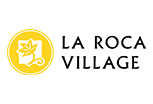We continue to the Domènech i Montaner House-Museum, former home of one of the great modernist architects, in Canet de Mar. It is wonderful to see the models for some of his most iconic works, such as the Palau de la Música or the Hospital de Sant Pau. In one of the village cafés, we try “vidrieres modernistes”, or “stained glass”, a type of unusual tea biscuit born of the initiative of local pastry makers. We continue to Arenys de Mar, the other Marine Village of the Maresme coast. In its fishing port, one of Catalonia’s most important, a picturesque auction is held every afternoon where we can see the prized prawns that will later be on the menus of major restaurants. At Arenys de Mar we see a curious kind of modernism, at the Sinera cemetery, a place Salvador Espriu immortalised in his poetry. If you are looking for another view of the town, the port starts off with boats that offer guided tours through the natural environment to enjoy the landscape, the seabed, and the pelagic birds. There is also the chance to do some night boating, watch the stars and hear mythological stories.
The tale of the entrepreneurs who made their fortune in the textile industry, as we saw on the visit to the Ter colonies, is reflected in houses like the Coll i Regàs in Mataró, our next stop. In the district capital, we also visit the Nau Gaudí, the architect’s first work which has now been converted into a contemporary art museum. We spend part of the afternoon shopping, not forgetting a few boxes of neules, a crunchy dessert typically eaten at Christmas, both plain and filled with Catalan cream and catanies chocolate almonds.

















